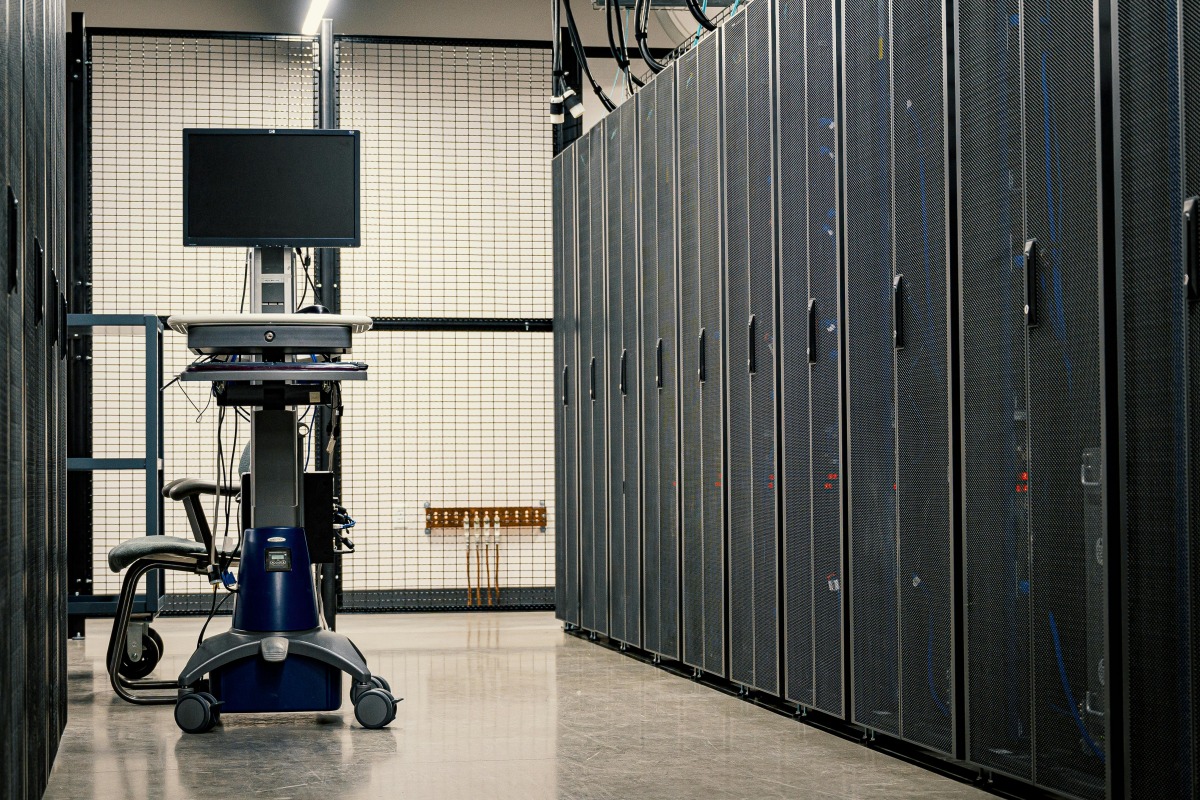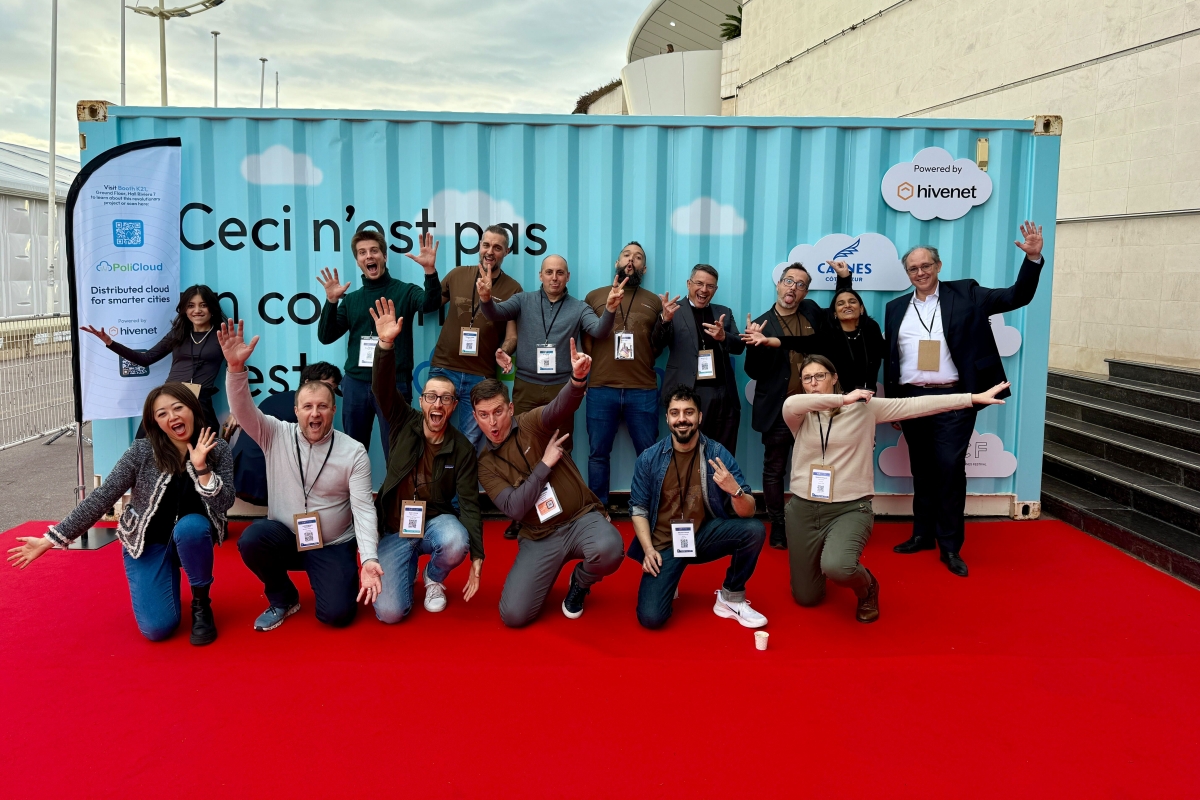Insights into Data Centre Investment & Market Growth
Commercial Real Estate: Property Developments, Trends & Infrastructure
Data Centre Business News and Industry Trends
Insights into Data Centre Investment & Market Growth
Quantica launches to accelerate data centre site development
Quantica Infrastructure, a US-based company that develops integrated systems for clean energy infrastructure projects, has officially launched with the aim of streamlining data centre deployment across North America.
The company says it focuses on delivering "shovel-ready" sites that combine access to renewable energy, traditional grid power, and robust network connectivity.
By offering an integrated, pre-prepared model for data centre development, Quantica aims to reduce project risk, speed up delivery, and simplify logistics. The company also emphasises a holistic approach that accounts for both environmental and community benefits.
Quantica is backed by the Energy Transition arm of EnCap Investments, a US-based private equity firm that has raised approximately $47 billion (£35 billion) in capital since its founding in 1988.
Together, the two companies aim to address infrastructure constraints in a market where demand for data centre capacity is rapidly increasing.
“Hyperscale and AI growth are demanding better solutions for power, land, and network connectivity,” says John Chesser, CEO and founder of Quantica Infrastructure.
“Quantica unlocks new opportunities by delivering shovel-ready, network-ready sites with dedicated renewable energy and resilient power supplies, so our customers can focus on innovation, not infrastructure logistics.”
Quantica’s leadership team includes professionals with experience across the energy, network, and data centre sectors.
Collectively, they have delivered more than 15GW of energy projects, constructed large-scale data centre campuses in 22 US states, and developed regional and international networks for global technology clients.
“Quantica’s platform is the solution needed to break through current barriers to AI and digital infrastructure expansion,” claims Jim Hughes, Managing Partner at EnCap.
“It gives us the opportunity to invest across the full spectrum of digital infrastructure – from renewable power generation to real estate and network connectivity. We’re excited by Quantica’s project pipeline and the momentum behind digital infrastructure growth.”
Joe Peck - 28 July 2025
Data Centre Business News and Industry Trends
Insights into Data Centre Investment & Market Growth
News
Kao Data appoints new Chief Business Officer
Kao Data, a developer and operator of data centres engineered for AI and advanced computing, has announced that Clinton Hasell has been appointed as the company’s new Chief Business Officer.
A seasoned, board-level executive with over 30 years of commercial and operational experience across the data centre, telecoms, and digital infrastructure sectors, Clinton has been named Chief Business Officer to spearhead the optimisation of Kao Data’s core business operations.
This includes the key responsibility for the company’s technology deployments and enterprise-level reporting.
Within his new role, Clinton will also lead the development function for Kao Data’s advanced infrastructure platform, aligning the organisation’s UK and European expansion plans.
“I am excited to move into my new role as Chief Business Officer and to work together with both our C-Suite and our talented organisational teams to help drive the company’s growth objectives from inception to delivery,” comments Clinton Hasell, new Chief Business Officer, Kao Data.
“Kao Data has established a market-leading position as a data centre developer and operator at the bleeding edge of AI deployment and it’s fitting we use the power of AI and advanced computing to deliver true business transformation.”
“On behalf of the company and our board, I am delighted to welcome Clinton Hasell to the Senior Management Team as our new Chief Business Officer, and at a time of transformation and evolution for the company,” says David Bloom, founder and Executive Chairman, Kao Data.
“Clinton has been a key part of our team for some time within a consultancy capacity, and it’s a fantastic endorsement of our future plans and ambitions that we have permanently secured his contribution as we develop new sites to scale our data centre platform across the UK and Europe.”
Prior to joining Kao Data, Clinton was a member of the Global Switch management team where, as Executive Group Director, Europe, he was responsible for maximising profitable growth across its European division.
He also held senior leadership roles at Interxion, from its $1 billion (£744 million) IPO in 2011 to its $8 billion (£5.95 billion) acquisition by Digital Realty Trust in 2020.
For more from Kao Data, click here.
Joe Peck - 25 July 2025
Commercial Real Estate: Property Developments, Trends & Infrastructure
Data Centre Business News and Industry Trends
Data Centres
Insights into Data Centre Investment & Market Growth
W Denis launches insurance offering for data centres
W Denis, a UK-based, independent insurance broker, has launched a new specialist division focused exclusively on insuring data centres and their integrated power generation infrastructure.
W Denis’ new division is unique in the insurance market by offering dedicated cover not only for the data centre buildings, plant, and technology, but also for the electricity generation assets, such as traditional CHP through to modern clean/green tech power, solar, wind, and hybrid systems, which provide resilience and independence from grid failures.
Capacity in the billions (£/€/$) is available through either direct insurance or facultative reinsurance structures, arranged with global insurers and reinsurers. This enables support for single-site, multi-site, and portfolio programmes across diverse geographies.
The offering includes a range of risk and insurance solutions for all phases of a data centre’s lifecycle:
• Construction all risks (CAR), including delay in start-up• Operational property damage and machinery breakdown• Business interruption, including utility failure triggers• On-site power generation asset insurance• Third-party legal liabilities• Legal indemnities (e.g. planning, easements)• Cyber, data breach, and E&O exposures• Specialist claims support and advocacy
In addition to insurance placement, W Denis says it provides clients with risk management consultation during pre-design, construction, and operational stages. This includes engineering risk reviews, loss prevention advice, and support with resilience planning.
Mark Dutton, Chief Commercial Officer at W Denis, comments, “Data centres are among the most critical and energy-intensive assets in the modern economy. Our new division recognises that effective insurance must cover both the data and the power that keeps it alive. Our clients benefit from deep technical expertise, strong capacity, and joined-up coverage from build to operation.”
Joe Peck - 16 July 2025
Data Centre Business News and Industry Trends
Insights into Data Centre Investment & Market Growth
News
Data centres could generate €26bn for Portuguese economy
Portugal is establishing itself as one of Europe’s main digital and AI ready hubs, and further growth in data centre development in the country could contribute up to €26 billion (£22.5 billion) to the national GDP between 2025 and 2030 - an average of €4.4 billion (£3.8 billion) per year - according to a study conducted this year by Start Campus, a Portuguese data centre development company, and economics consultancy Copenhagen Economics.
Direct and indirect socio-economic impact
The study, Assessment of the Socio-Economic Benefits of the Data Centre Sector in Portugal, released this Monday estimates that the sector could support up to 50,000 full-time jobs every year, including direct, indirect, and induced employment, provided favourable investment and regulatory conditions are in place.
Between 2022 and 2024, data centres already added €311 million to Portugal’s GDP, sustaining around 1,700 jobs annually - drawing and retaining skilled professionals and strengthening regional cohesion whilst opening up new education pathways.
The report highlights Portugal’s bench of qualified talent in data-centre-relevant fields - a sentiment echoed by digital ecosystem stakeholders - and notes a solid tech base of roughly 230,000 ICT specialists alongside a high proportion of STEM graduates.
Artificial intelligence as a driving force
The study also points out that by 2030, around 70% of computing capacity will be dedicated to AI applications, underscoring the need for modern, resilient, and sustainable infrastructure. Demand for this capacity is expected to grow at a rate of 33% per year through the end of the decade.
The widespread adoption of cloud computing, big data, and AI solutions by companies and public entities depends on the existence of efficient and scalable data centres capable of ensuring low-latency connectivity. Without this foundation, the full potential of digital technologies for businesses, public services, and users could be compromised.
Portugal’s competitive advantages
The analysis indicates that Portugal is well-positioned to become a key hub in AI and digital infrastructure in Europe.
This is underpinned by a competitive electricity cost – approximately 30% below the European average – and a large supply of electricity from renewable sources – namely 87.5% of total net generation. Portugal’s Atlantic coast also provides conditions for resource-efficient cooling solutions that contribute to reducing freshwater consumption, energy consumption, and operational costs, such as the use of seawater.
Portugal benefits from a robust connectivity infrastructure, with approximately 25% of the world’s submarine cables passing through the country. It also offers 92% fibre optic coverage, ranking as the third-best network in the European Union (EU).
“Portugal has all the right conditions to establish itself as a leading digital and AI hub in Europe: strategic connectivity, clean energy, and a highly skilled workforce. This study confirms that, with the right public policies, data centres can become a driver of economic growth and territorial cohesion,” says Robert Dunn, CEO of Start Campus.
"Portugal is emerging as a key European destination for data centre investments, yet achieving its fullest potential cannot be taken for granted given intense international competition to host digital infrastructures. There are already significant economic benefits from existing data centres alone, which represent a fraction of future opportunities,” comments Bruno Basalisco, Director at Copenhagen Economics.
Policy conditions will shape future investments and corresponding socio-economic benefits
To ensure the full development of the sector and to make the most of this industry’s potential, the study outlines some areas of action where policymakers could consider fostering investments:
1. Ensure predictability and access to the electrical grid and components such as chips;
2. Streamline licensing processes for both technological and energy infrastructures;
3. Develop targeted measures for data centre investment;
4. Promote digitalisation and AI adoption across the business sector and public administration.
The Copenhagen Economics report is based on an input-output macroeconomic model, using data from Eurostat, the OECD, and national operators. It also includes interviews with more than 15 stakeholders from the digital ecosystem, including AICEP, ANACOM, FCT, international technology companies, and local authorities.
For more from Start Campus, click here.
Joe Peck - 15 July 2025
Data Centre Infrastructure News & Trends
Enterprise Network Infrastructure: Design, Performance & Security
Insights into Data Centre Investment & Market Growth
CityFibre agrees £2.3 billion in major new financing round
CityFibre, an independent UK full fibre platform, has reached an agreement with its shareholders and existing lenders on a £2.3 billion financing round, aiming to accelerate its next phase of growth.
The financing includes £500 million in new equity secured from CityFibre shareholders, Infrastructure at Goldman Sachs Alternatives, Antin Infrastructure Partners, Mubadala Investment Company, and Interogo Holding.
CityFibre has also agreed a committed £960 million expansion of its existing debt facilities, supported by lenders including ABN AMRO, BBVA, Crédit Agricole CIB, ING, Intesa Sanpaolo IMI CIB, Lloyds, the National Wealth Fund, NatWest, SEB, and Société Générale. The facility will support CityFibre’s continued network investment and should enable it to connect hundreds of thousands of new customers across its nationwide network.
An accordion facility of £800 million is also being made available to help drive CityFibre’s expansion through the acquisition of full fibre network assets. This facility will be used to finance the company’s M&A pipeline.
Greg Mesch, CEO of CityFibre, comments, “This round of financing will supercharge CityFibre’s next phase of growth as we consolidate the altnet sector, accelerate the pace of customer connections, and unleash the full power of our market-leading 10Gb XGS-PON network for the benefit of all our partners, their customers, and for the UK economy.
“There is huge opportunity ahead for CityFibre and it is [a] testament to the success of the company that we have such strong backing from our lenders and shareholders. This multi-billion-pound investment into critical digital infrastructure will deliver significant benefits across the UK, helping to realise potential and unlocking economic growth.”
This investment marks a significant moment in upgrading the UK’s digital infrastructure. It will deliver world-class infrastructure and services to millions of consumers and businesses and provide the digital foundations for the UK’s economic growth for decades to come.
Rachel Reeves, Chancellor of the Exchequer, says, “Today’s announcement shows Britain is attracting billions of pounds of investment, including through the National Wealth Fund, driving growth across British businesses.
“Investing in our digital infrastructure is key to ensuring our economy is fit for the future. Through our Plan for Change we’re growing the economy by boosting investment in Britain and working hand in hand with businesses to create jobs, to put more money in working people’s pockets.”
Peter Kyle, Secretary of State for Technology, adds, "This investment in CityFibre is welcome news. It's proof our telecoms industry is driving investment into the UK as well as building the digital foundations that will serve generations to come.
“The success of the UK's network providers will help accelerate the rollout of gigabit-capable broadband to millions of homes and businesses across the country. I hope to see even more success stories like this one because this sector is critical not just to improving internet speeds, but to transforming quality of life for communities and creating opportunities in every part of the country as part of our Plan for Change."
Over the past 12 months, CityFibre has announced its first full year of profitability, launched Sky’s full fibre and Gigafast+ services across CityFibre’s nationwide network, completed the integration of Lit Fibre, announced the acquisition of Connexin’s full fibre infrastructure, and reached more than 4.5 million premises with its full fibre network, over half way to CityFibre’s milestone.
For more from CityFibre, click here.
Joe Peck - 14 July 2025
Data Centre Business News and Industry Trends
Data Centres
Insights into Data Centre Investment & Market Growth
Debunking the myth: The world is not running out of data centres
Concerns about resource depletion are not new to economists. From fears of "peak oil" to anxieties over food shortages, history has shown that as demand surges, supply mechanisms adapt accordingly. Today, a similar narrative is emerging around data centres. A closer examination, however, reveals that, despite burgeoning demands, the industry is not approaching a resource-constrained peak. Instead, data centre infrastructure is evolving dynamically to meet increasing needs, driven by advancements in artificial intelligence (AI), cloud computing, and the expansion strategies of hyperscale companies.
Daniele Viappiani, Portfolio Manager at GC1 Ventures, explores this further:
The evolution of data centres: Scaling to meet demand
Data centres are intricate ecosystems requiring stable electricity, advanced cooling systems, robust connectivity, and stringent security measures. While, theoretically, they can be constructed anywhere, optimal locations are chosen based on factors such as minimal natural disaster risk, proximity to essential infrastructure, and favourable environmental conditions. The industry is witnessing the emergence of massive, highly sophisticated data centres alongside smaller, modular facilities. These two complementary approaches combine to suitably address growing demand.
Modular data centres are prefabricated units that offer rapid deployment and scalability, addressing the need for swift expansion. According to reports, the global market for modular data centres is projected to grow significantly, reaching $93.3 billion (£68.6 billion) by 2030, driven by the demand for plug-and-play solutions that can be deployed quickly to meet immediate needs.
Addressing challenges: Labour, construction, and utilisation
The complexity of data centres requires highly specialised labour, including engineers, electricians, and network experts, who are currently in high demand. Constructing large-scale data centres is a capital-intensive endeavour with lengthy lead times. While smaller facilities may take months, large centres can require up to three years to become operational.
Despite this, existing data centres often operate below full capacity, allowing for short-term scaling. Many facilities are intentionally over-provisioned to manage utilisation peaks and accommodate growth, often running at under 50% utilisation. This design allows for the addition of servers or workloads within hours or days, provided the physical infrastructure supports it. Upgrading older servers to more efficient models can further enhance capacity, though limitations are primarily dictated by electrical and cooling infrastructures.
Power constraints and regulatory hurdles
Rapid expansion faces obstacles such as power grid limitations and zoning regulations, particularly in urban areas. The surge in electricity demand from data centres has led utilities to grapple with unprecedented power requests. For instance, Oncor Electric in Texas, USA, received requests totalling 119 gigawatts, far exceeding its current capacity. Utilities are responding by increasing capital spending and exploring infrastructure expansions, though challenges like overbuilding and rising construction costs persist.
Zoning regulations also pose challenges, as finding suitable locations near physical infrastructure without overwhelming existing systems requires careful planning. In response, the industry is adopting innovative strategies, including the repurposing existing real estate such as old malls and factories, and expanding into emerging markets in Southeast Asia, Africa, and Latin America.
Sustainability initiatives: Embracing renewable and nuclear energy
With high energy consumption, sustainability becomes a priority, so investments in renewable energy, passive cooling, and nuclear power to overcome grid limitations are key. In 2024, renewable sources like wind, hydro, and solar provided a record 32% of global electricity, surpassing the 30% share in 2023. This growth aligns with the data centre industry's shift towards greener operations.
Some companies are exploring nuclear power as a solution to provide massive, always-on power, free of carbon emissions. The US Department of Energy has identified federal sites, including major national laboratories, as potential locations for data centres aimed at accelerating AI development, leveraging existing energy infrastructure and the potential for expedited permitting, especially for nuclear energy projects.
The AI boom: Assessing future demand
The proliferation of AI has exacerbated concerns over increases in data centre demand. Training large models requires substantial computational power, contributing to a significant rise in electricity consumption. However, it's also possible that we may see diminishing marginal returns from using more data centres for AI and, eventually, demand growth could slow down. Emerging AI models requiring fewer processing chips may reduce future power needs, indicating that while current demand is high, future growth may stabilise.
While concerns about data centre shortages are understandable given the rapid advancements in technology and increasing digital demands, the industry is demonstrating resilience and adaptability. Through the development of both massive and modular data centres, strategic location planning, investment in sustainable energy sources, and continuous innovation, the data centre sector is well-equipped to scale efficiently. The challenges remain significant, but with proactive strategies and technological advancements, the industry is poised to meet the demands of the digital era without approaching a resource-constrained peak.
Joe Peck - 8 July 2025
Data Centre Business News and Industry Trends
Insights into Data Centre Investment & Market Growth
News
DigitalBridge and La Caisse complete acquisition of Yondr
DigitalBridge and La Caisse (formerly CDPQ) have announced the successful completion of the acquisition of Yondr Group, a global developer, owner, and operator of hyperscale data centers, from Cathexis Holdings. This investment furthers DigitalBridge and La Caisse’s history of partnership in digital infrastructure investing, positioning Yondr to accelerate its expansion in strategic markets and attempt to meet the surging demand for hyperscale and AI-driven data centres. La Caisse is investing alongside DigitalBridge-managed investment vehicles and has assumed joint control of Yondr.
In connection with the completion of the acquisition, Aaron Wangenheim has been appointed as Chief Executive Officer, and Sandip Mahajan as Chief Financial Officer, effective immediately.
Yondr develops and operates data centres to address data centre capacity demands of large technology companies. The operator has more than 420MW of capacity committed to hyperscalers and additional land to support a total potential capacity of over 1GW. The company believes it is well-positioned to capitalise on the growing demand for advanced data processing capabilities driven by ongoing digital transformation, the expansion of cloud solutions, and the rise of AI.
“We’re thrilled to finalise our acquisition of Yondr alongside La Caisse,” announces Jon Mauck, Senior Managing Director and Head of Data Centers at DigitalBridge. “With a diverse global portfolio of campuses, Yondr further strengthens DigitalBridge’s world-class data centre portfolio and reinforces our focus on being a global partner to the leading hyperscale, technology, and AI companies that are driving the digital economy. We look forward to working alongside Aaron and Sandip, who bring extensive leadership experience, as we support Yondr’s strategy of developing and operating scaled capacity to meet the demands of AI and cloud computing. We are also very pleased to partner again with La Caisse, who shares our partnership-orientated approach to long-term value creation.”
“Over the past few years, we have explored various direct investment opportunities in the data centre space and Yondr has stood out as a compelling platform to capitalise on the growth of the sector. At the end of 2024, we joined forces with DigitalBridge – a trusted partner – to invest in Yondr’s next development phase under renewed leadership and ownership,” adds Emmanuel Jaclot, Executive Vice President and Head of Infrastructure at La Caisse. “This investment reflects our conviction in the value of digital infrastructure and our confidence in Yondr’s ability to scale with agility, innovate, and deliver AI-ready data solutions at pace.”
DigitalBridge and La Caisse have a longstanding track record of partnership in the digital infrastructure sector. In 2019, La Caisse acquired a 30% stake in Vertical Bridge, a private owner and operator of communications infrastructure in the United States and a DigitalBridge portfolio company. In 2024, DigitalBridge and La Caisse supported Vertical Bridge's $3.3 billion (£2.4 billion) tower transaction with Verizon.
"I am proud to have supported Yondr on its journey since its formation in 2018. Yondr has become a vital infrastructure partner to many of the world's largest technology companies, and I believe DigitalBridge and La Caisse are the right partners to support Yondr through its next stage of growth. I look forward to seeing what the business will achieve," says William Harrison, CEO of Cathexis.
Aaron, who joins Yondr as Chief Executive Officer, brings over two decades of data centre leadership and extensive experience overseeing the development and operations of data centre campuses around the world. He spent over a decade at T5 Data Centers in roles of increasing responsibility, including eight years as Chief Operating Officer. Most recently, he served as an advisor and developer of customised data centre solutions, where he worked with numerous investors evaluating both the property and operating aspects of the evolving data centre industry.
Sandip, who joins Yondr as Chief Financial Officer, brings over three decades of financial leadership and infrastructure investment experience, including expertise in leveraged finance, equity and debt raising, and financial transformation. He has served as Chief Financial Officer at Mitie Group, a publicly-listed, UK-based support services business, and was earlier at Balfour Beatty, a publicly-listed construction services business in a number of roles, including as a project finance leader specialising in infrastructure equity investments.
“Yondr has an impressive track record as a leading developer, owner, and operator of hyperscale data centres, and I’m excited to be joining the company as Chief Executive Officer at such a pivotal time for the business and the industry,” comments Aaron. “I look forward to leading Yondr through its next phase of growth with the backing of two world-class investors that appreciate the critical role we play in supporting our clients.”
Aaron succeeds Paul Cossell, who is retiring from the Chief Executive Officer role after two and a half years at Yondr and a nearly three-decade career in the construction and infrastructure industry. Sandip succeeds Chester Reid, who is stepping down from the Chief Financial Officer role after more than two years at Yondr to pursue other business interests.
For more from Yondr, click here.
Joe Peck - 3 July 2025
Data Centre Business News and Industry Trends
Insights into Data Centre Investment & Market Growth
News
PoliCloud raises €7.5 million
PoliCloud, a provider and developer of high performance computing (HPC) cloud infrastructure, has announced its €7.5 million (£6.42 million) seed fundraise.
The funding was led by Global Ventures, a VC firm in MENA, with participation from MI8 Limited, a Hong Kong multi-family office; OneRagtime, a Paris-based venture capital firm; Inria, France’s National Institute for Research in Digital Science and Technology; and other private investors.
The proceeds will be used to hire the operating team and grow the business globally with a focus on public entities in Europe.
PoliCloud says it is responding to demand following global cloud growth (~20% annually). Accelerated demand for AI requires affordable and scalable computing power, and the market is ripe for a Europe-led solution to lessen dependence on US cloud providers, who currently dominate the $800 billion (£583.9 billion) market.
David Gurlé, Founder of PoliCloud, claims, “PoliCloud is meeting a critical market demand for sovereign cloud infrastructure that is not only secure and abundant, but also eco-responsible. Our unique edge computing capabilities deliver significant benefits to both public and private sector users.
“The time is right for a new, European solution that reduces reliance on US cloud providers and offers affordable, scalable computing power, especially as AI adoption accelerates. We are grateful to Global Ventures and all our investors for their support as we enter this exciting phase of expansion.”
Current cloud expansion suffers from high usage costs and dependence on hyperscalers - such as Google or Amazon - whose models use massive, centralised data facilities with high implementation costs and challenging environmental conditions. In this respect, PoliCloud claims it has the following competitive advantages:
● 'Unlimited and flexible computing power,' provided by federating with the grid. By y/e 2025, it says it will have >1,000+ GPUs and by y/e 2026 >20,000+ GPUs;● Computing resources are delivered to where they are needed and 'empower local communities;'● Small footprint and energy needs;● Rapid time to market, with flexibility and adaptability;● Capex and Opex offset by sharing unused capacity; and● 'More resilient, higher performance, and more scalable by design.'
PoliCloud’s operating model combines its hardware and infrastructure with Hivenet’s distributed storage and computing software. PoliCloud designs, builds, and operates its own computers and micro-data centres. It was launched in February 2025 at the World Artificial Intelligence Cannes Festival (WAICF) with support from the five cities of the Alpes-Maritimes.
Simon Sharp, Senior Partner of Global Ventures, comments, “Global Ventures is delighted to lead PoliCloud’s seed fund raise and work again with David and his talented management team, following their track record of successful delivery in Hivenet. [...] Their distributed data centres have multiple competitive advantages: delivering next-gen, sovereign computing resources where they are needed; with more resilience; faster performance; greater security; while being cheaper to build and maintain. The exponential growth in AI demand and the need for reliable, scalable computing power means the company’s future is a very bright one.”
Stephanie Hospital, Founder & CEO of OneRagtime, adds, “As an early investor and believer in David and Hivenet, [...] OneRagtime is excited to invest in PoliCloud. The company is uniquely positioned to provide decentralised, unlimited computing power affordably, securely, and in an eco-responsible way – for which substantial demand exists.”
Bruno Sportisse, CEO of Inria, says, "Inria Participations is delighted to become an investor in PoliCloud as it is a logical extension of Inria's existing strategic partnership with Hivenet. Inria and PoliCloud share the same philosophy of a decentralised path to the cloud and for secure, distributed computing, but where resources can also be shared according to need. Achieving this goal is of strategic importance for France and its digital sovereignty."
Guillaume Dhamelincourt, Managing Director of Mi8, concludes, “The opportunity to invest in PoliCloud was compelling for Mi8 as the world embraces AI and rapidly adjusts its demand for computing power. The multiple use cases for PoliClouds, such as SMEs - but also public enterprises who want to stay mindful of their IT strategy's impact - is an attractive market environment and we look forward to PoliCloud’s future growth with great confidence.”
Joe Peck - 30 June 2025
Artificial Intelligence in Data Centre Operations
Data
Data Centre Operations: Optimising Infrastructure for Performance and Reliability
Insights into Data Centre Investment & Market Growth
News
UKRI invests £22 million into data spending
The UK Department for Research and Innovation (UKRI) has invested £22 million into data spending and staff over the past three years, underscoring the department's strategic commitment to data as a cornerstone of national research and innovation.
Data is playing an increasingly vital role, particularly as artificial intelligence (AI) is being rolled out throughout government departments, with 70% of government bodies already piloting or planning to use AI, highlighting the urgent need for high-quality, structured, and secure data.
This development marks a 70% increase in salary investment in just two years, reflecting both rising headcounts and the increasing value of data expertise in shaping the UK’s research landscape.
Stuart Harvey, CEO of Datactics, comments, “Both businesses and government departments are keen to implement AI into their business functions but are overlooking the fundamental truth that AI is only as good as the data it learns from. Hiring challenges are becoming an increasing problem, but businesses should follow in the UKRI's footsteps to invest in data spending and staff, and upskill their teams in data management, governance, and quality to improve data readiness.
“AI is only as effective as the data it processes and without structured, accurate, and well-governed data, businesses risk AI systems that are flawed. The rush to deploy AI without a strong data foundation is a costly mistake and, in a competitive AI landscape, only those who get their data right will be the ones who thrive.”
UKRI’s investment in its data workforce reflects the growing demand for high-quality, well-managed, and accessible data that enables researchers to collaborate, innovate, and respond to global challenges.
Between 2022 and 2025, UKRI’s data-related salary investment rose by 85%, from £5.35 million to £9.89 million, reflecting both growing headcounts and the escalating value of data expertise across the UK’s research ecosystem.
Over the same period, the number of staff with “data” in their job titles rose from 138 in 2022 to 203 in 2025 - a 47% increase.
Sachin Agrawal, Managing Director for Zoho UK, says, “As the UK continues to position itself as a global science and technology powerhouse, it is a welcome sight to see the department prioritising the investment of its data workforce for long-term commitment to data-driven research.
“In an era where public trust and data ethics are paramount, building in-house expertise is essential to ensuring that data privacy, transparency, and compliance are at the heart of our national research infrastructure. This strategic investment lays the foundation for smarter and safer technology use by the UKRI."
Joe Peck - 9 June 2025
Data Centres
Hyperscale Data Centres: Scale, Speed & Strategy
Insights into Data Centre Investment & Market Growth
News
Townsend Group invests in CleanArc Data Centers
CleanArc Data Centers, a developer and operator of renewables-focused hyperscale data centre campuses, announced today that Townsend Group, an advisor and partner to institutional investors globally, has made a strategic investment in the company.
The investment was led by Townsend, which advises a consortium of global investors, including some of the largest sovereign and pension plans pursuing strategic stakes in leading investment and operating platforms. This new partnership further supports CleanArc’s growth initiatives as it continues developing its first data centre campus in Virginia, set to deliver 300 MW of capacity by Q1 2027.
“We’re excited to welcome Townsend as a strategic investment partner,” says James Trout, Founder and CEO of CleanArc. “Their capital markets expertise, institutional knowledge, and private real assets scale will be instrumental as we execute on our mission to develop the data centres of the future, particularly our inaugural campus in Virginia, VA1. Townsend brings a demonstrated track record of supporting transformative businesses throughout their growth journeys. And with Snowhawk’s ongoing investment leadership, we’re well-equipped to continue tackling the growing data centre challenges faced by hyperscalers.”
“CleanArc’s strong team of industry veterans and their shrewd approach to site selection, development and power structuring really sets them apart,” adds Anthony Frammartino, CEO and Chairman, at Townsend. “We’re excited to support the company’s continued development of leading data centre campuses across Tier 1 markets.”
Snowhawk LP will remain the majority stakeholder in CleanArc as the company continues to solidify partnerships with hyperscale customers and expand infrastructure in key markets.
“Snowhawk is delighted to partner with Townsend on this strategic investment in CleanArc, further accelerating innovation and the development of capacity to support the next generation of AI and cloud capabilities,” remarks Brian McMullen, Managing Partner and Co-Founder of Snowhawk Partners.
“CleanArc continues to set new standards in future-focused data centre development,” concludes Greg Stamas, Managing Director at Snowhawk. “In partnership with Townsend and our other investors, we are excited to support CleanArc’s continued leadership in sustainability and renewable energy use.”
For more from CleanArc Data Centers, click here.
Simon Rowley - 17 April 2025

Head office & Accounts:
Suite 14, 6-8 Revenge Road, Lordswood
Kent ME5 8UD
T: +44 (0)1634 673163
F: +44 (0)1634 673173









